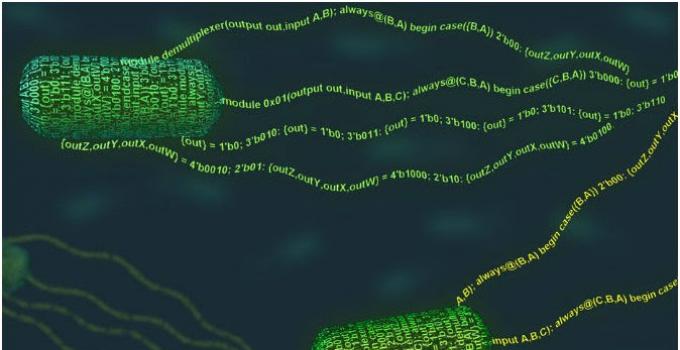A new programming language, analogous to computer code, has been written that gives researchers the tools to create biological circuits inside living cells.
At the moment, the circuits are simple, but more advanced versions could reprogram cells to detect cancer and then produce a drug to kill it on the spot.
Or a bacteria could be programmed to help lactose intolerant people digest lactose. Even plants could benefit. They could contain a bacteria that produces insecticide when they sense they’re being nibbled on.
“You use a text-based language, just like you’re programming a computer,” Christopher Voigt, an MIT professor of biological engineering, said in a press statement. “Then you take that text and you compile it and it turns it into a DNA sequence that you put into the cell, and the circuit runs inside the cell.”
Voigt and colleagues at Boston University and the National Institute of Standards and Technology have built biological circuits capable of measuring light, temperature, acidity, and other environmental conditions such as oxygen level or glucose.
One of the circuits they built is the biggest of its kind; it contains seven logic gates and about 12,000 base pairs of DNA.
With the new programming language, scientists now have a standard method for fashioning these circuits, which means they can create them quickly and then test them ASAP.
Voigt said he wants to make the language available on the Web for others to use.
The team reported their research in this week's "Science."

